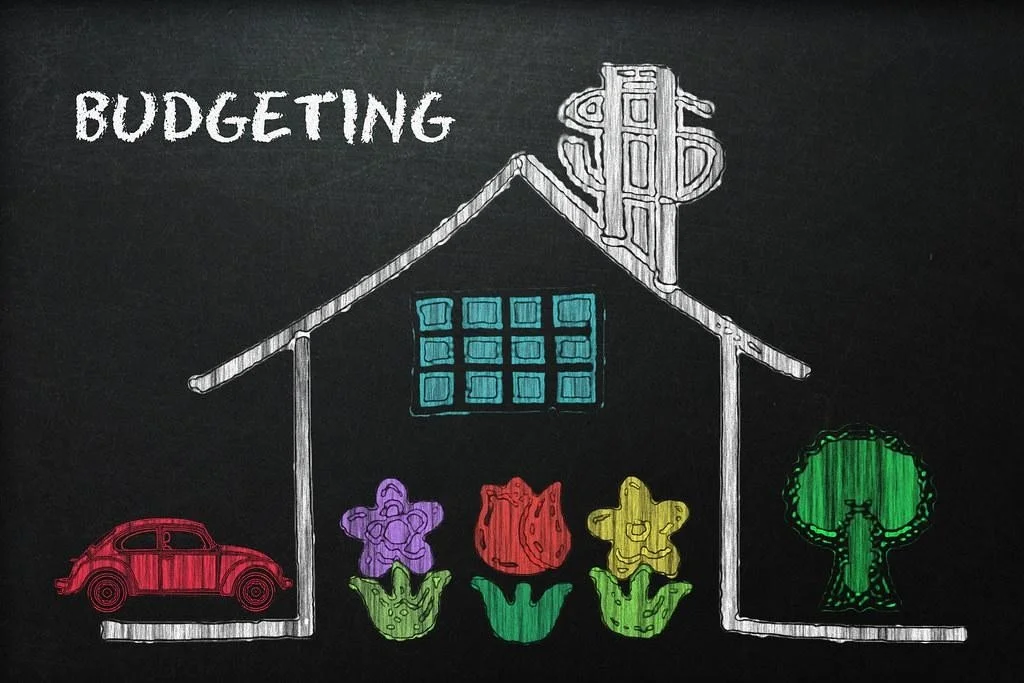The Art of Budgeting: Real-World Strategies
June 24, 2025
Living within your means sounds simple enough: just spend less than you earn. But anyone who’s ever tried sticking to a budget knows it can be easier said than done.
To reach your financial goals, you need a clear plan. This could be for an emergency fund, a dream vacation, a down payment, or just to stop living paycheck to paycheck. Budgeting isn’t just about cutting back; it’s about taking control of your financial future.
Step One: Set Clear Financial Goals
The first step in any successful budgeting effort is knowing what you're working toward. Are you saving to build a rainy-day fund?
Trying to pay off credit card debt? Or are you hoping to finally take that overseas trip you’ve been dreaming of? Whatever your motivation, having specific goals makes it easier to stay focused and committed to your budget.
Once your goals are in place, the next step is mapping out your monthly income and how you want to allocate it. This includes covering your needs, such as housing, groceries, and utilities.
It also includes spending on fun things like entertainment, dining out, or travel. Don’t forget to include a portion for savings, even if it’s small at first. The goal is progress, not perfection.
Step Two: Choose a Budgeting Method That Works for You
There’s no one-size-fits-all approach to budgeting. Some people thrive on spreadsheets and financial apps, while others prefer a pen-and-paper method. The best system is the one you’ll actually use.
Take Jessica, a marketing professional from Illinois. She relies on her credit card’s built-in tracking tools to monitor spending by category. This allows her to make informed decisions each month based on actual data.
On the flip side, Kelsey, who runs a small communications business in Alabama, finds comfort in old-school tactics. She keeps track of her grocery spending with paper receipts. She adds up the totals by hand. This helps her stay aware of food costs. She chooses vegetarian meals or pantry staples when needed.
Step Three: Stay Motivated with Visual Reminders
Visualization can be a powerful motivator. For example, Kayla is a magazine editor in New York.
She sets her phone wallpaper to a picture of her next travel spot. It serves as a constant reminder to save instead of splurge. Little visual cues like this can make a big impact on spending habits, helping you resist impulse buys in favor of long-term rewards.
Others find inspiration through tech tools. Elysia, a content creator, uses a budgeting app that tracks her financial goals and spending patterns. It also sends motivational messages to keep her mindset focused on saving rather than spending. A small daily nudge can go a long way in changing behavior over time.
Step Four: Find an Accountability Partner
Budgeting can be more effective—and more enjoyable—when you’re not doing it alone. Talking regularly with someone you trust, whether it's a friend, partner, or parent, can help you stay the course.
For Kieran, a professor in Chicago, that accountability comes from his dad. Watching his father manage the family budget had a big impact on him. Now, it affects how he handles his own money as an adult.
Step Five: Watch for Lifestyle Creep
As your income grows, so can your expenses—a phenomenon known as lifestyle creep. Suddenly, what felt like a luxury becomes a monthly habit. To keep this in check, it helps to compare spending before and after any raises or new income streams.
Leslie, a travel agent in New York, regularly reviews her budget to make sure her spending habits haven’t gradually inflated beyond what’s necessary. She emphasizes humility and self-awareness when it comes to managing money.
Step Six: Automate and Separate Savings
One of the simplest ways to avoid overspending is to make your savings invisible. Libby, a real estate agent in Texas with variable commission income, deposits a portion of each paycheck into a separate high-yield savings account—and then doesn’t touch it. By “paying herself first” and hiding those funds from everyday view, she protects herself from the temptation to overspend when times are good.
Step Seven: Reflect on Spending Emotions
It’s worth taking the time to reflect on how certain purchases make you feel. Did that pricey kitchen gadget actually improve your life, or is it gathering dust? On the other hand, maybe splurging on a housecleaning service gave you much-needed peace during a stressful month. Aligning spending with your values and emotional well-being can guide better decisions and reduce buyer’s remorse.
Step Eight: Give Yourself Grace and Celebrate Milestones
Budgeting isn’t about being perfect—it’s about being persistent. Slip-ups happen, and that’s okay. What matters is getting back on track. Leslie, who keeps a close eye on her financial habits, says that giving herself grace helps her stay grounded and motivated.
When you hit a financial milestone, don’t forget to reward yourself. It doesn’t have to be fancy. A long walk, an hour with a favorite book, or a relaxing bath can show progress in a meaningful way.
Budgeting is more than crunching numbers—it’s about aligning your money with your values and dreams. By identifying your goals, creating a personalized plan, and staying flexible along the way, you can build lasting financial habits that empower your future.
Sources:
https://www.fidelity.com/learning-center/smart-money/budgeting-tips
Disclosure:
This information is an overview and should not be considered as specific guidance or recommendations for any individual or business.
This material is provided as a courtesy and for educational purposes only.
These are the views of the author, not the named Representative or Advisory Services Network, LLC, and should not be construed as investment advice. Neither the named Representative nor Advisory Services Network, LLC gives tax or legal advice. All information is believed to be from reliable sources; however, we make no representation as to its completeness or accuracy. Please consult your Financial Advisor for further information.

